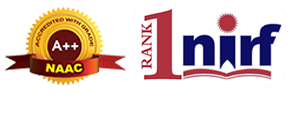
Indira Gandhi National Open University(IGNOU) इंदिरा गांधी राष्ट्रीय मुक्त विश्वविद्यालय (इग्नू)




The broad objective of the MCA programme is to prepare graduate students for productive careers in software industry and academia by providing an outstanding environment for teaching and research in the core and emerging areas of the discipline. The Programme’s thrust is on giving the students a thorough and sound background in theoretical and application-oriented courses relevant to the latest computer applications. The programme emphasizes the application of software technology to solve mathematical, computing, communications/networking and commercial problems.
The broad objective of the MCA programme is to prepare graduate students for productive careers in software industry and academia by providing an outstanding environment for teaching and research in the core and emerging areas of the discipline. The thrust of programme is on giving the students a thorough and sound background in theoretical and application oriented courses relevant to the latest computer software development. The programme emphasizes the application of software technology to solve mathematical, computing, communications / networking and commercial problems. This Master’s Degree Programme has been designed with a semester approach in mind. The first year courses are aimed at theoretical knowledge and practical skills development in core computer science subjects. The second year is more focused on advanced courses providing conceptual framework and the project work.
























